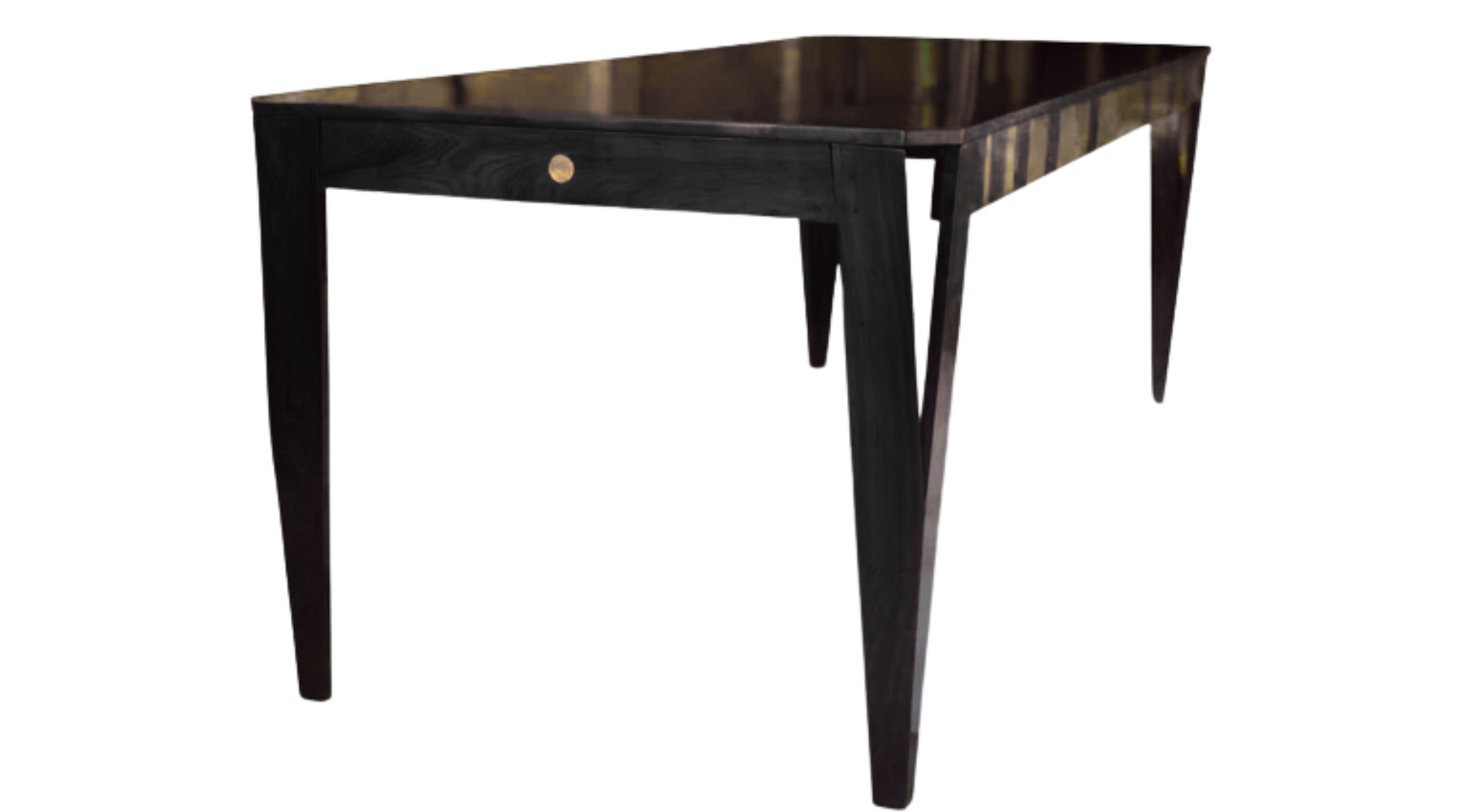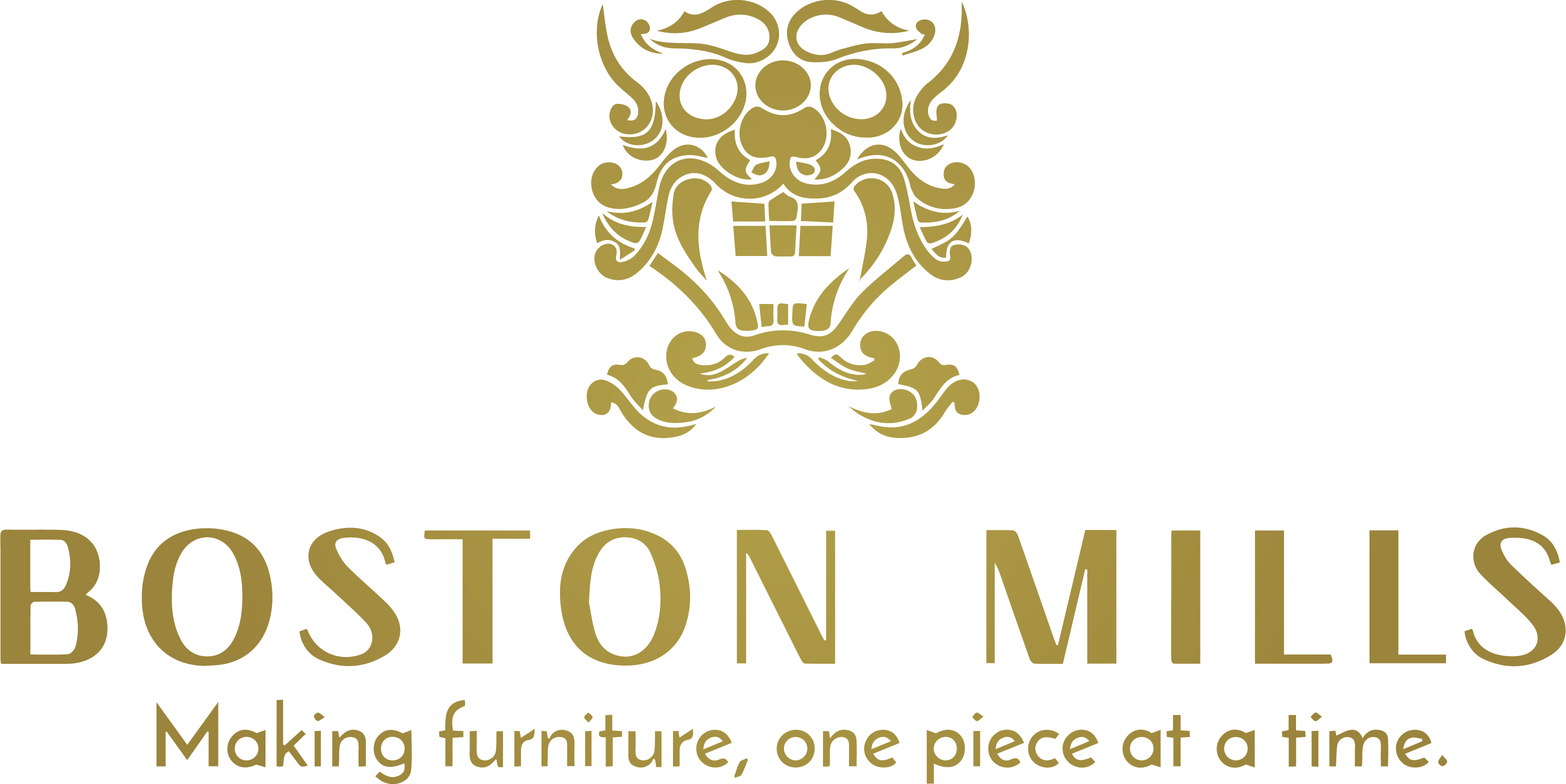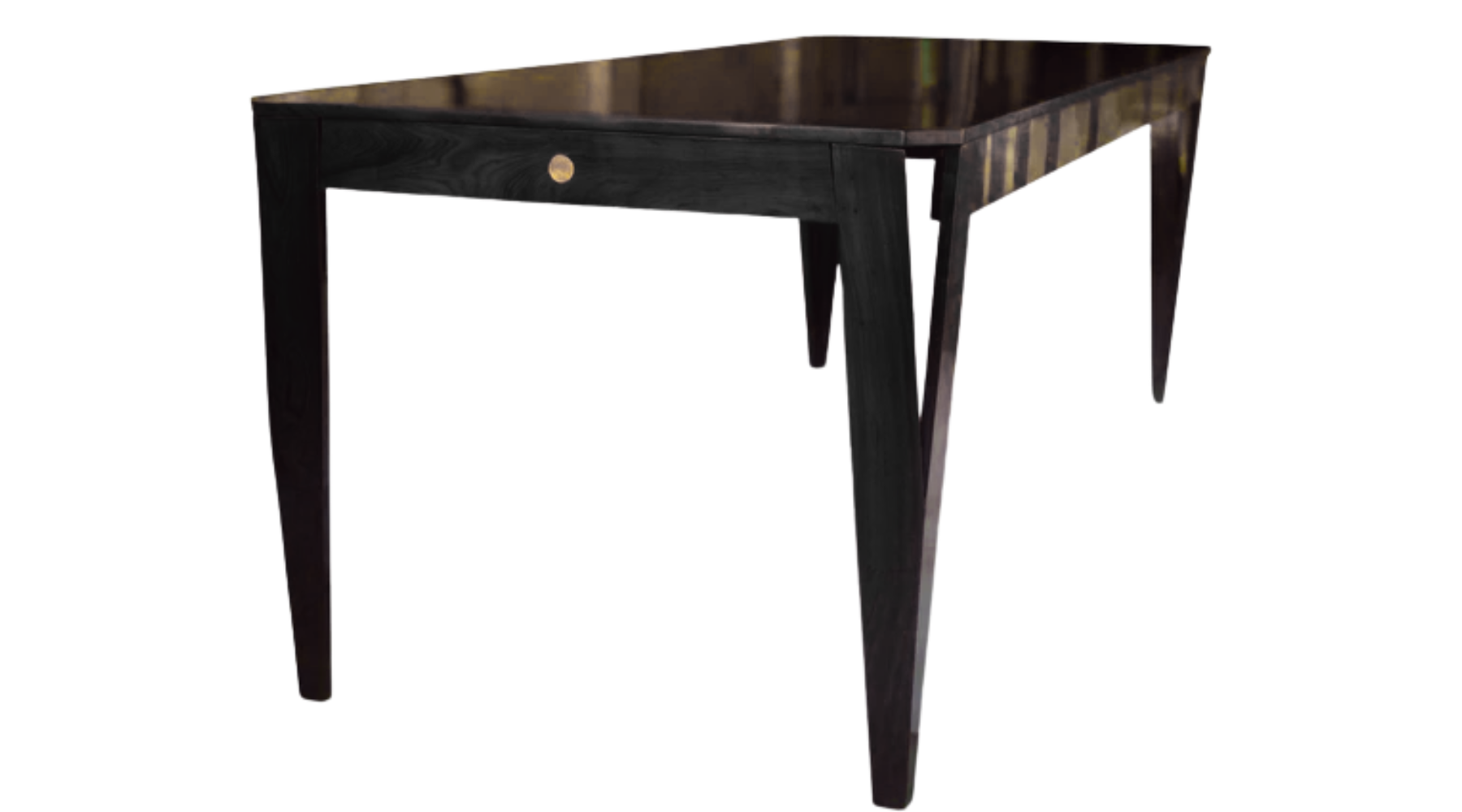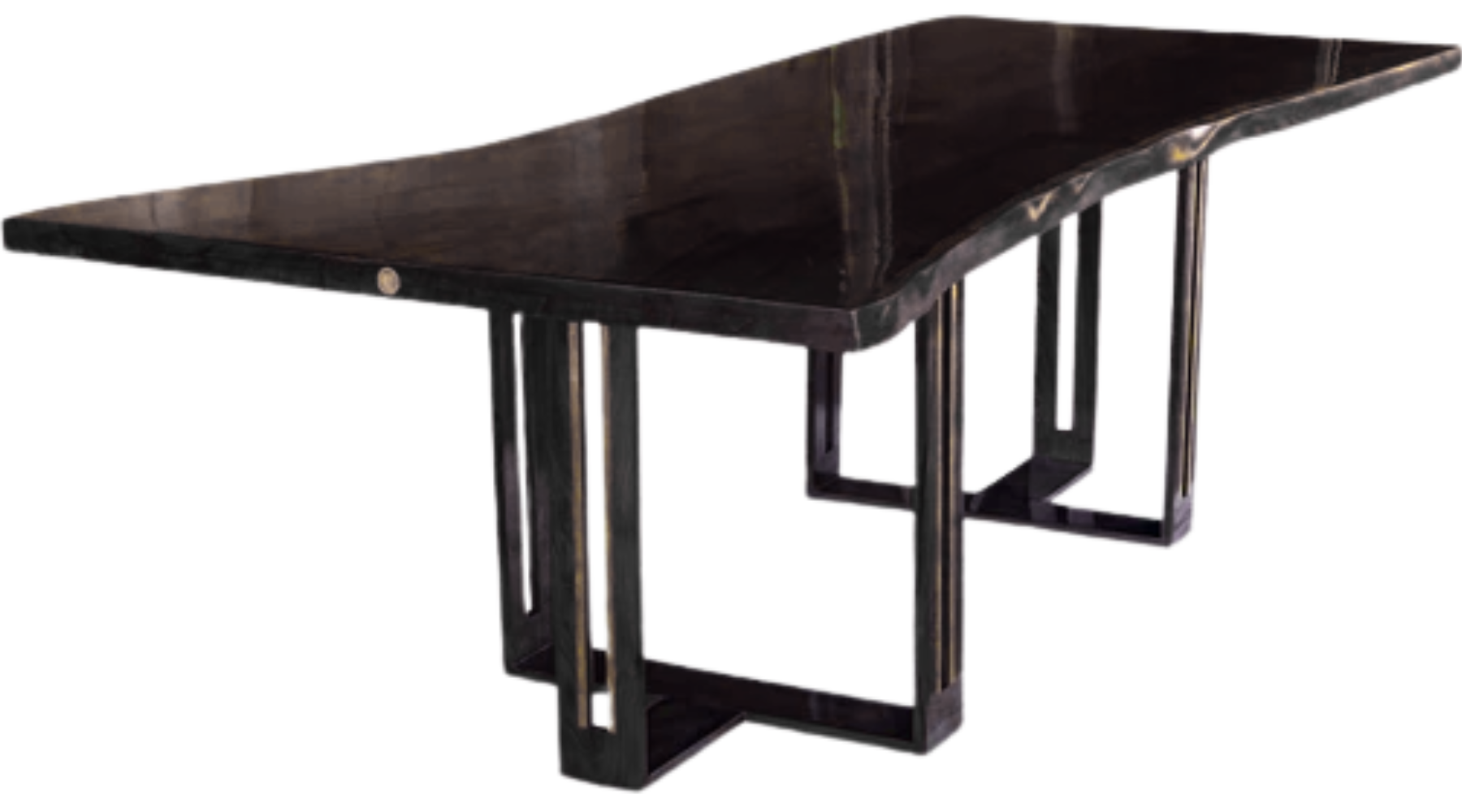
How to Clean Your Solid Wood Dining Table Without Damaging the Finish
A solid wood dining table is more than a piece of furniture; it is an investment that adds warmth, character, and functionality to your home. But keeping its beauty intact needs proper care and cleaning methods to prevent damaging the finish. The wrong products or techniques can cause discoloration, scratches, or a dull finish in the long run. In this tutorial, we will discuss the optimal methods for cleaning your solid wood dining table without damaging its finish, so it can continue to be a beautiful centerpiece for many years.
Knowing Your Table's Finish
Prior to cleaning your solid wood dining table, you need to know its finish. Various finishes need different care procedures. Some of the most common wood finishes are:
Lacquered Finish
This finish has a hard, glossy surface that is highly resistant to spills and scratches. It can become dull or develop fine scratches if cleaned with abrasive substances.
Oiled Finish
An oiled finish brings out the natural grain of the wood and gives it a soft, matte appearance. It needs to be re-oiled periodically to maintain the surface's nourishment and protection.
Waxed Finish
A waxed finish forms a subtle sheen and provides mild moisture and stain protection. Its protective covering has to be maintained regularly through re-waxing for shine and coating.
Polyurethane or Varnish Finish
These offer long-lasting, water-resistant protection for the wood but tend to cloud up or develop spots when cleaned using abrasive chemicals.
After understanding your table's finish, you can then select the proper cleaning steps to ensure its longevity and beauty.
Daily Cleaning Routine
A daily cleaning routine is important to maintain your solid wood dining table in its best condition. Having a simple daily cleaning schedule will avoid dirt buildup, minimize wear, and preserve the finish of the wood. Here's the proper way to do it:
Dust Daily
Dust can pile up on your table's surface, causing subtle scratches over time. Dust once a day with a soft microfiber cloth or a feather duster. Avoid using abrasive cloths or paper towels, which can cause micro-abrasions.
Use a Damp Cloth to Clean
Clean the table with a damp, lint-free cloth that is slightly moist to wipe away fingerprints, food particles, and minor spills. Avoid excessive moisture, as too much water can get absorbed into the wood and lead to warping or swelling.
Dry with a Soft Cloth
Follow up by drying immediately with a soft, dry cloth. This helps prevent water stains or water damage due to residual moisture.
Gentle Treatment for Sticky Spots
In the event of liquid or food spills, clean immediately with a gentle soap and water mixture. Immerse a soft cloth into the solution, squeeze it gently, and treat the spot accordingly. Avoid scrubbing, as this can break down the finish over time.
Deep Cleaning Your Solid Wood Dining Table
Even with regular cleaning, your table will need a deeper clean occasionally to maintain its luster and hygiene. Here’s how to give it a thorough yet gentle clean:
Remove Surface Dirt
Before applying any cleaning solution, wipe down the table with a dry microfiber cloth to clear away crumbs, dust, and debris. This step prevents dirt from spreading and scratching the surface.
Prepare a Mild Cleaning Solution
Combine a little mild dish soap with warm water in a bowl. Do not use vinegar, bleach, or ammonia-based cleaners, as they will remove the wood's finish.
Wipe with the Grain
Wet a soft cloth in the solution, wring it out thoroughly, and wipe the table in the direction of the wood grain. This preserves the natural appearance of the wood and avoids streaking.
Dry Thoroughly
After cleaning, dry with a microfiber cloth to remove any excess moisture and avoid water marks or warping.
Restore the Glow with a Natural Polish
To ensure your table remains radiant, use a natural polish on the wood. A basic homemade one is a combination of equal parts olive oil and vinegar. Use a soft cloth, massaging it in circular motions to bring out the sheen of the wood.
Erasing Stubborn Stains Without Harm
Despite precautions, spills and stains occur. Here's the safe way to deal with common stains:
Water Rings
Water rings may occur when cold or hot drinks are placed directly on the wood. To eliminate them, use a small quantity of mayonnaise or petroleum jelly on the spot. Leave it for an hour, then wipe it off with a clean cloth.
Heat Marks
White heat marks can occur when hot cups or dishes are placed directly on the table. Mix baking soda and toothpaste in equal proportions, then rub the mark gently with a soft cloth. Clean it with a damp cloth and dry immediately.
Grease Stains
Lightly sprinkle cornstarch or baking soda over the grease stain and leave it for several hours to soak up the oil. Clean away the powder with a dry cloth and then clean the area normally.
Ink or Permanent Marker Stains
Rub a cloth lightly with rubbing alcohol or a bit of non-gel toothpaste. Rub gently until the stain is removed, then wipe off with a damp cloth and dry at once.
Preventing Damage to Your Solid Wood Dining Table
Prevention is the most effective way to preserve the look and integrity of your solid wood table. Here are some precautionary steps you can take:
Use Placemats and Coasters
Prevent the table from moisture, heat, and scratches by placing placemats beneath plates and coasters beneath cups and glasses.
Avoid Harsh Chemicals
Cleaning products with ammonia, bleach, or abrasives remove the finish from the wood and lead to dull patches. Avoid using harsh chemicals and use mild, natural cleaners instead.
Control Humidity Levels
Wood expands and contracts with humidity fluctuations. Maintain indoor humidity levels between 40-60% to avoid warping and cracking.
Keep Out of Direct Sunlight
Fading and discoloration may result from extended exposure to sunlight. Keep your dining table away from direct sunlight or cover it with curtains to limit exposure.
Reapply Oil or Wax
If your table has an oiled or waxed finish, apply oil or wax at regular intervals to preserve its protective coating and promote its natural appearance.
Long-Term Maintenance and Care
In addition to normal cleaning, the following long-term maintenance will keep your solid wood dining table lasting longer:
Re-oil or Wax Every Year
If your table has a natural finish, re-oil or re-wax once a year to maintain its durability and beauty.
Don't Drag Heavy Items
Dragging plates, centerpieces, or heavy items can cause scratches. Always lift them instead.
Refinish When Necessary
Over time, scratches and wear marks might appear. If your table becomes dull or scratched, consider refinishing it to restore its original charm.
Conclusion
Taking care of your solid wood dining table need not be an intimidating experience. By using the right cleaning methods and maintenance routines, you can keep your table in pristine condition for years. Regular everyday wiping, routine thorough cleaning, and preventative measures will ensure your solid wood dining table remains a prized centerpiece in your home. With proper care, your dining table will not only preserve its elegance but continue serving as a focal point for family gatherings for decades to come.



